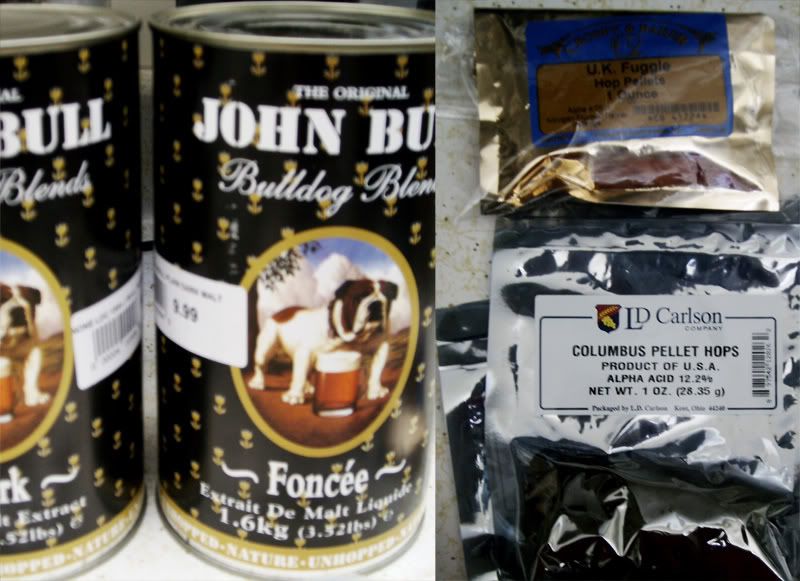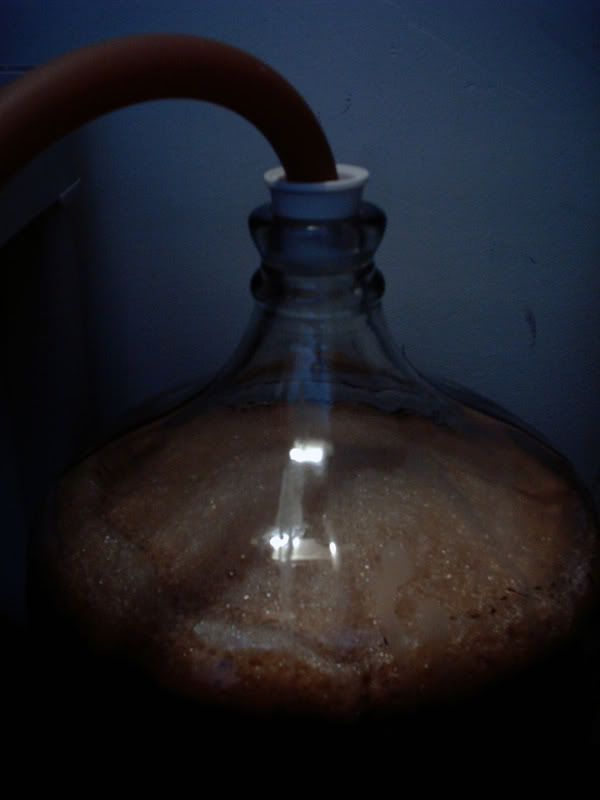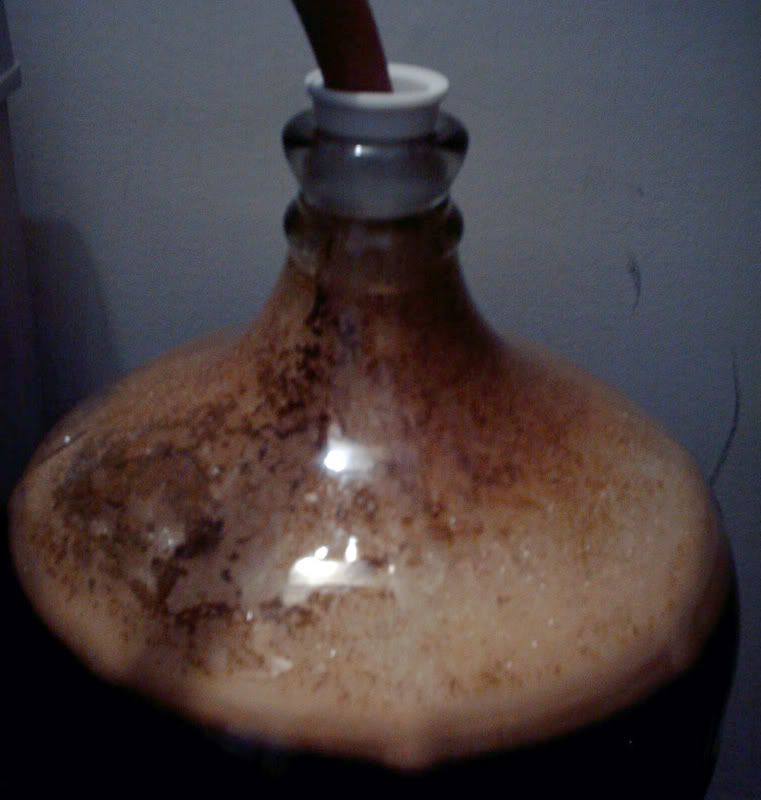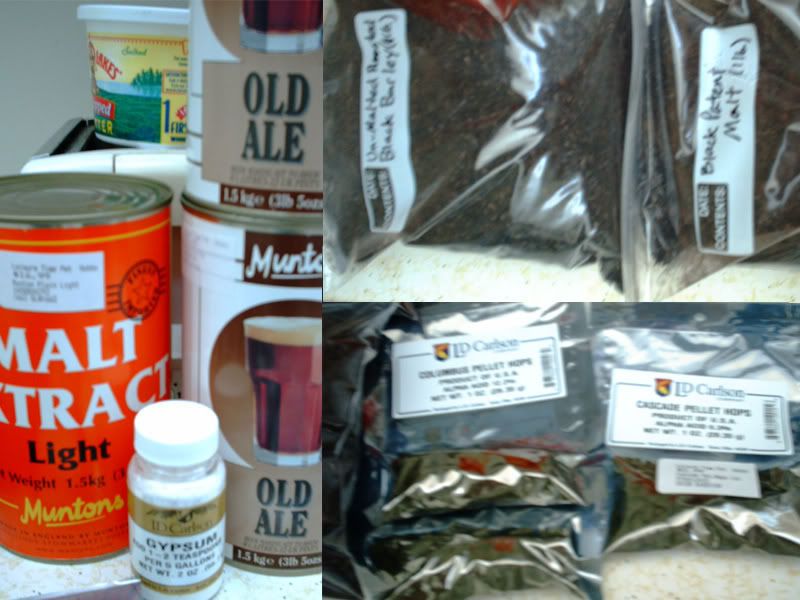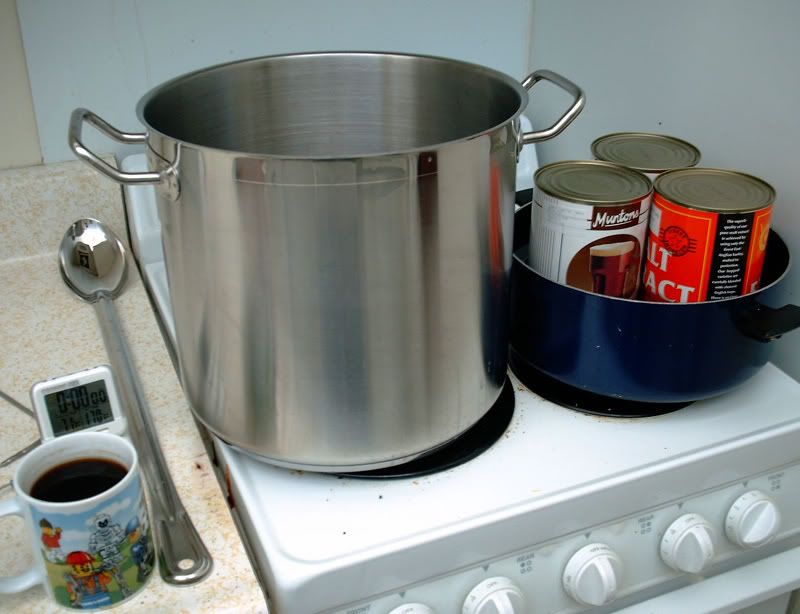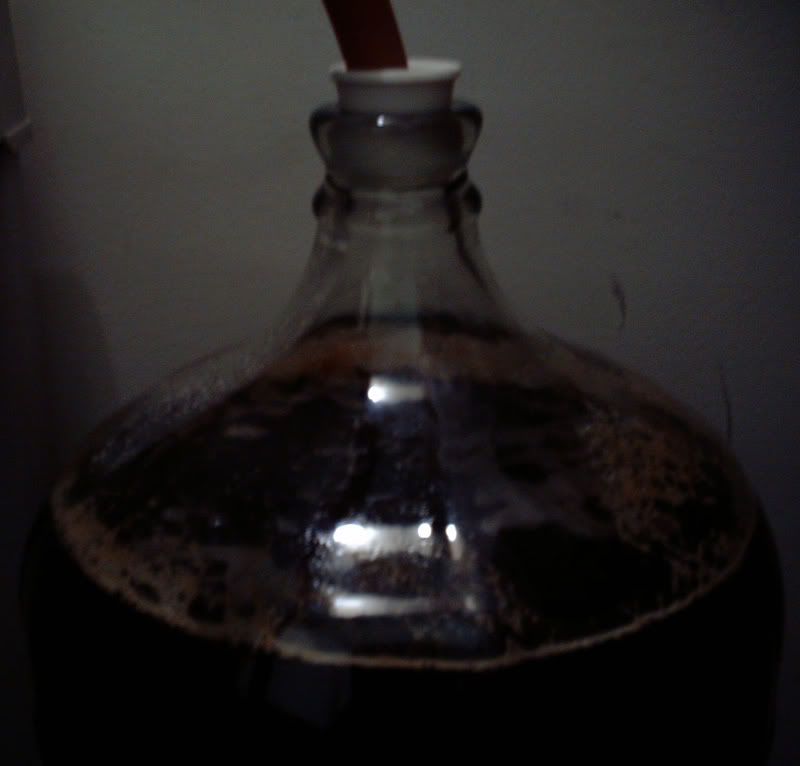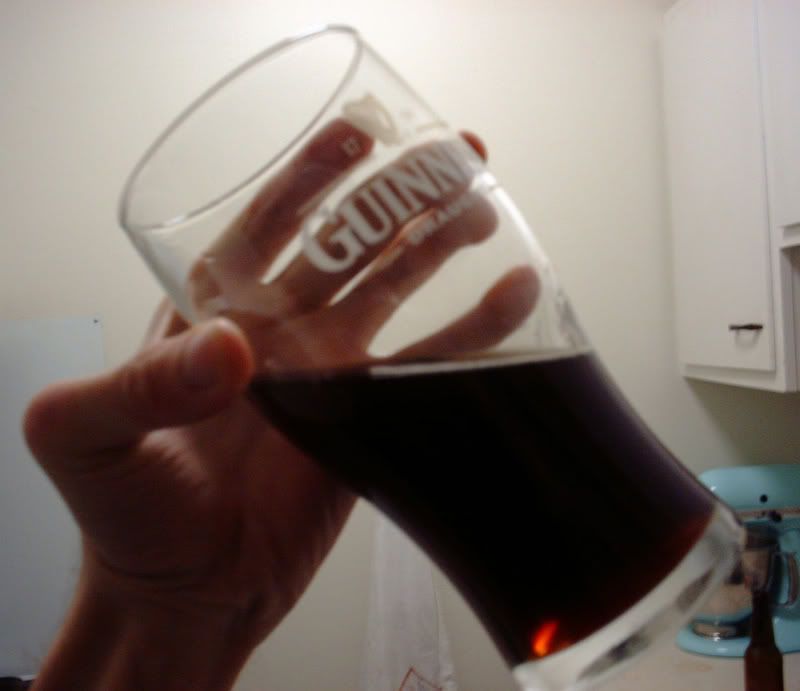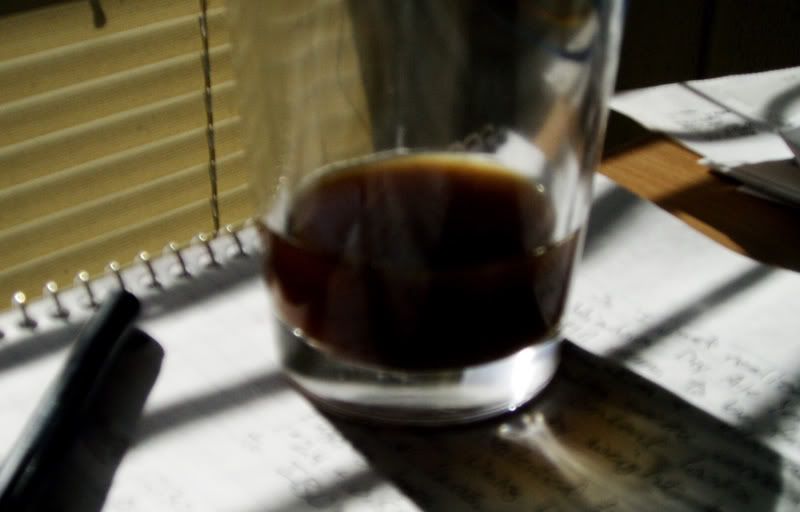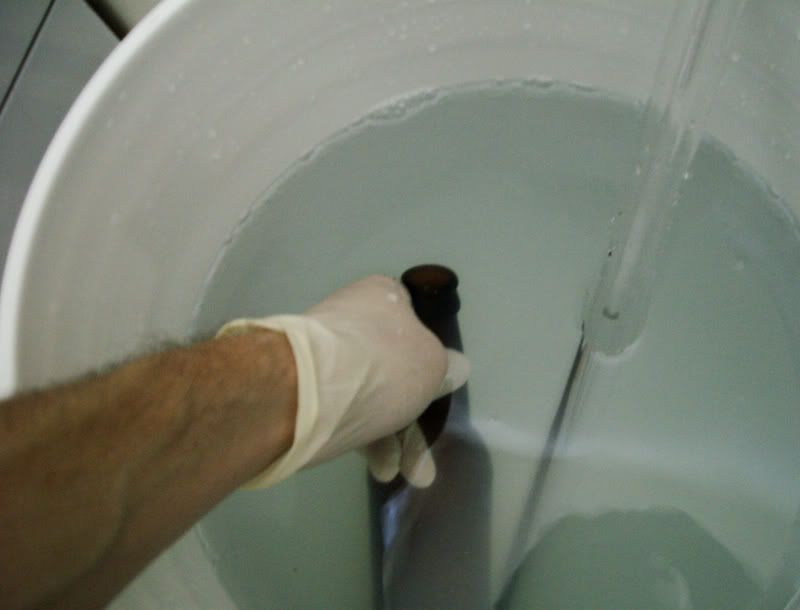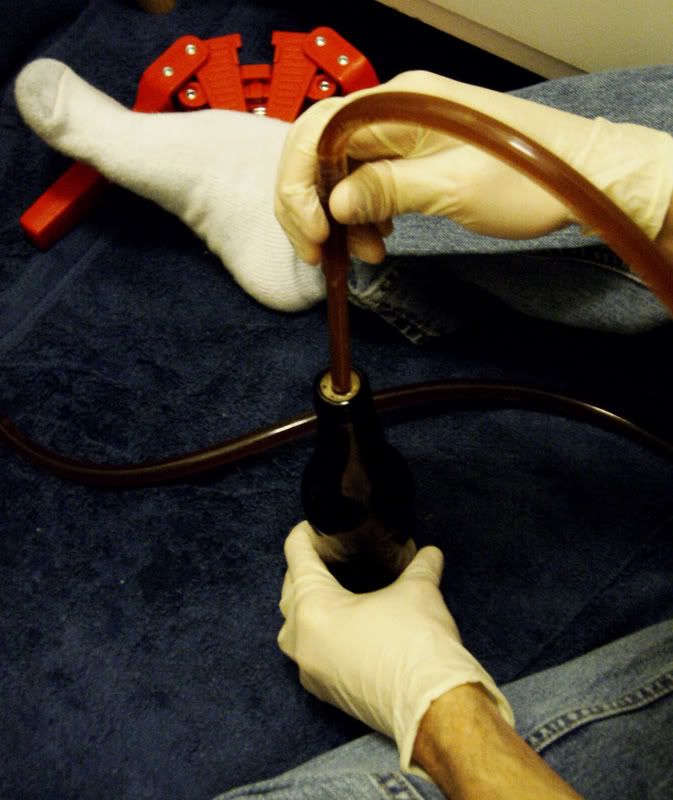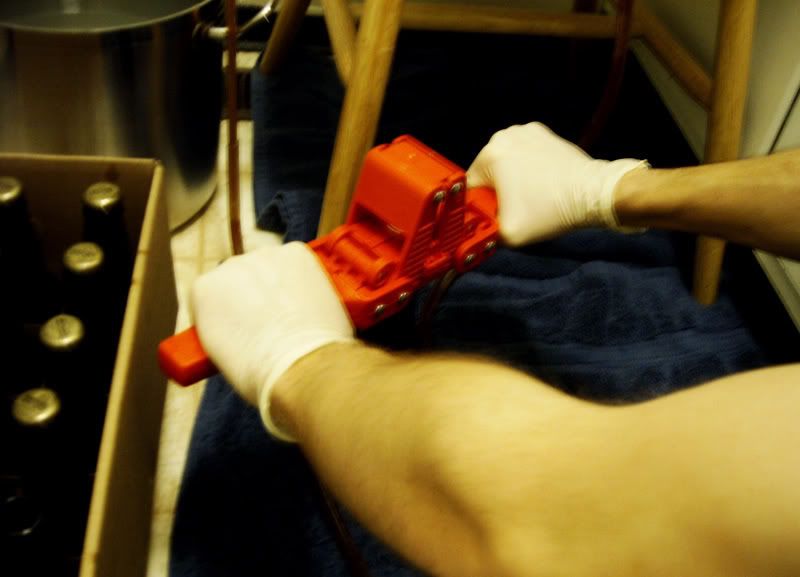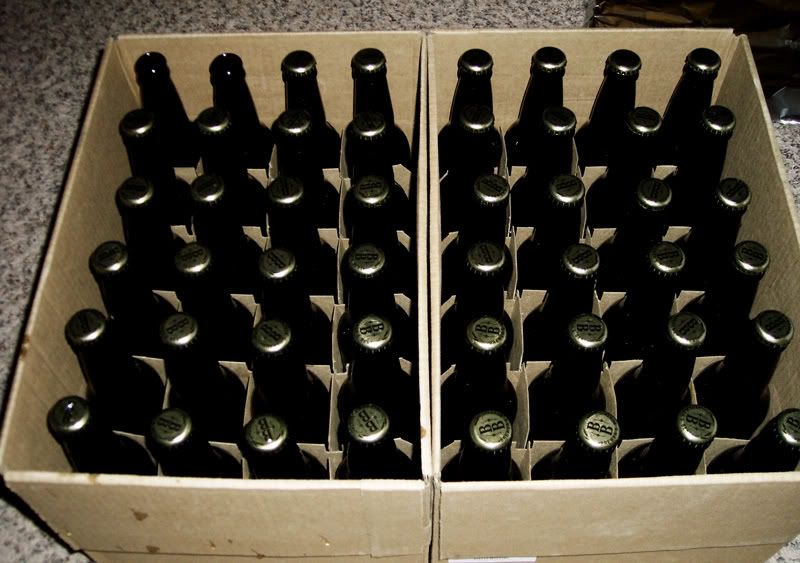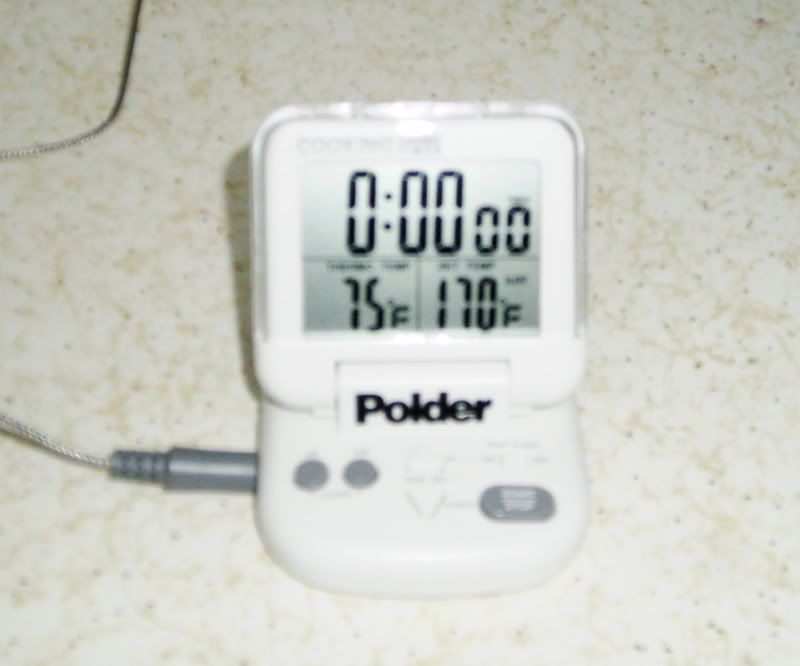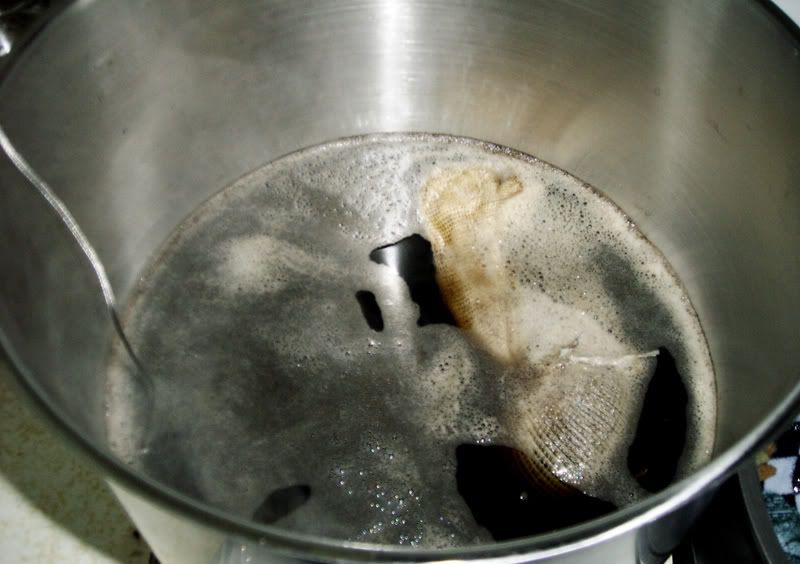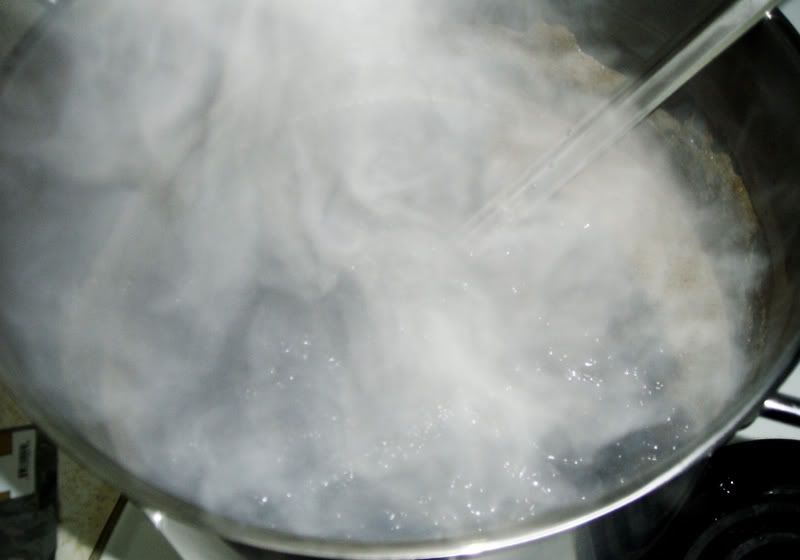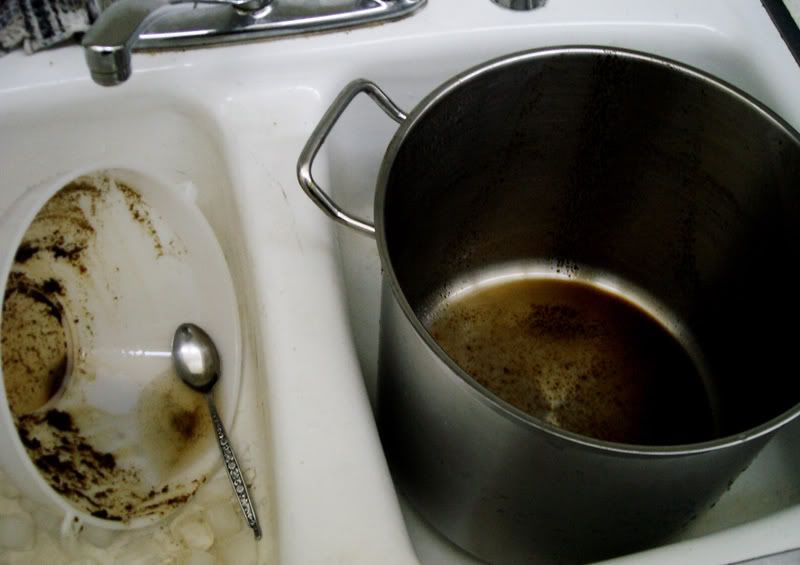Bottling went smoother this time, mostly because of lessons learned from the last bottling. It still took me about 3 hours from start to final clean-up because you still have to sanitize, fill, and cap 48 bottles.
Boiling the priming sugar before I did anything else was the way to go because by the time I was ready to pour it into the bottling bucket it was down to near room temp. The acquisition of hose clamps also improved things as it made my auto-siphon actually work!
Anyway, here's the rundown. (I apologize in advance for the poor picture quality. Not only am I using a crappy camera, but I think I have Parkinson's or something becuase I could not keep my hands still.)
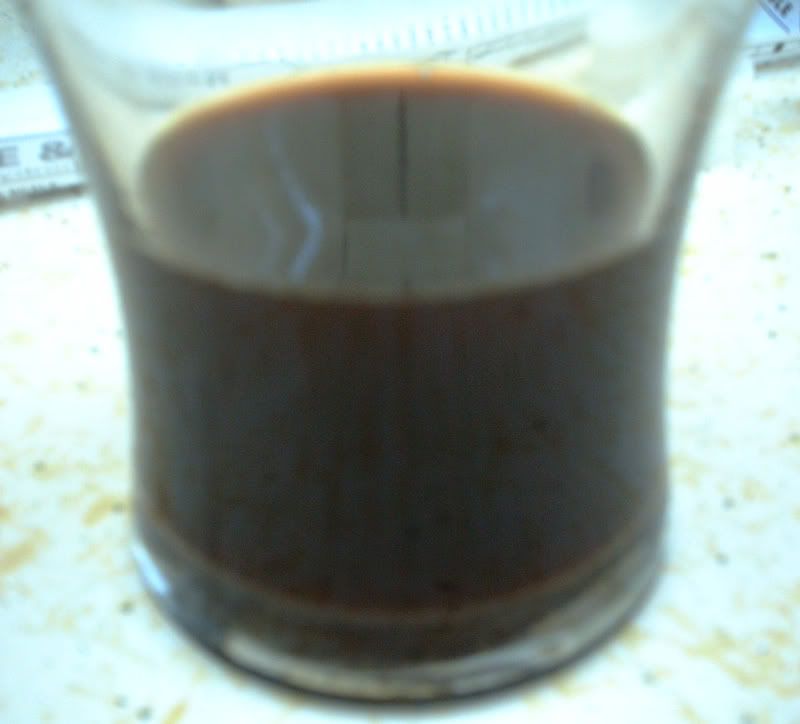
As you can see, it's a very dark beer. As I mentioned before, the recipe is from
Charlie's book and as far as I can tell, everything he says about this beer is true. My OG and FG were both a little higher than the recipe states (1.082 and 1.026, respectively, versus 1.075 and 1.025, respectively). Normally, his book has an expected bitterness (in IBUs) and color (in SRMs) for a given recipe, however; for this beer he states that the bitterness is "Like wow!" and the color is "Like really dark".
He couldn't be more correct. I may have understated the bitterness of this beer in my previous post. It is not for the faint of tongue. Most of the bitterness comes from the hops, but despite this, it doesn't come off like a dark IPA or anything. The bitterness really hits you on the aftertaste on the back of the tongue. There is a quality to the bitterness that isn't hop-like, which I think might be from the adjunct grains; it's hard to describe exactly.
Make no mistake though, this is certainly an imperial stout, albeit a bit more bitter than what is available commercially. It has an ABV of 7.35%, which you can't really distinguish becuase of all the other flavors that are going on in the beer. The mouthfeel is medium to full bodied (with an FG of 1.026, how could it not be?), but isn't syrupy at all. (I hate syrupy beers.)
Another thing I should mention is that the beer smells a little fruity, although there is no fruity flavor whatsoever. I'm wondering if maybe sometime in the past couple of days the temperature in the fermentor got a little high and the yeast produced some esters. I don't remember that aroma being there a few days ago when I last pulled a sample. I might be overreacting though as it's kind of hard to tell if it's truly fruity or if the aroma is just from the alcohol as the aroma of alcohol has a significant presence as well.
I believe all the harshness of this beer should mellow out with age, and if not, hell, I'll still drink it. Apparently the beer is ok to drink after two weeks, but really starts to be optimal after four to six weeks. You can also age it for longer than that and it supposedly continues to improve, so I'll have to let some of them age for a few months to a year and see what happens.
Ok, on to the bottling process.
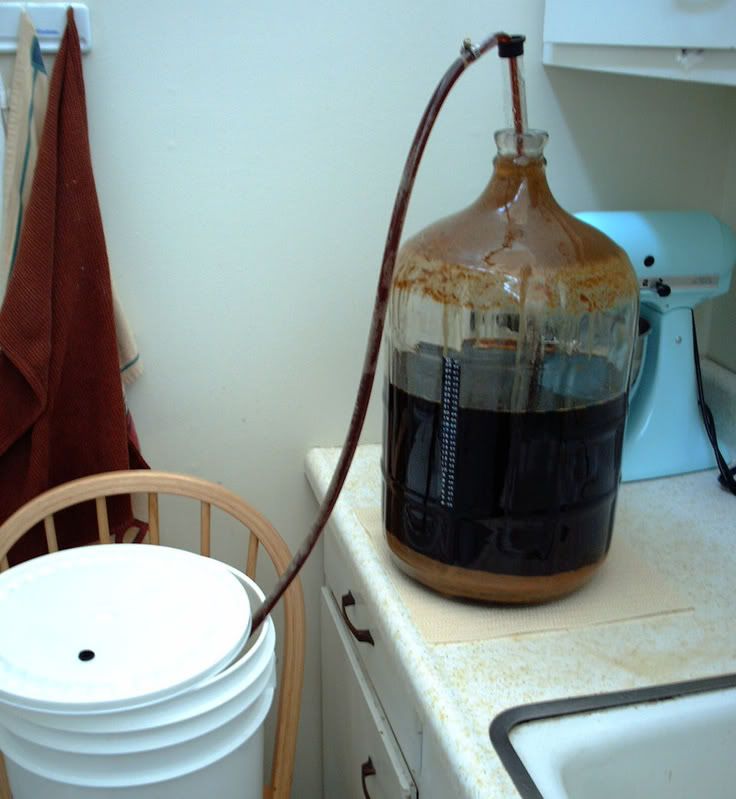
Here I'm siphoning the beer out of the fermenter into the bottling bucket which has been primed with the boiled corn sugar. Thanks to a hose clamp, I didn't introduce a bunch of air into my beer this time.
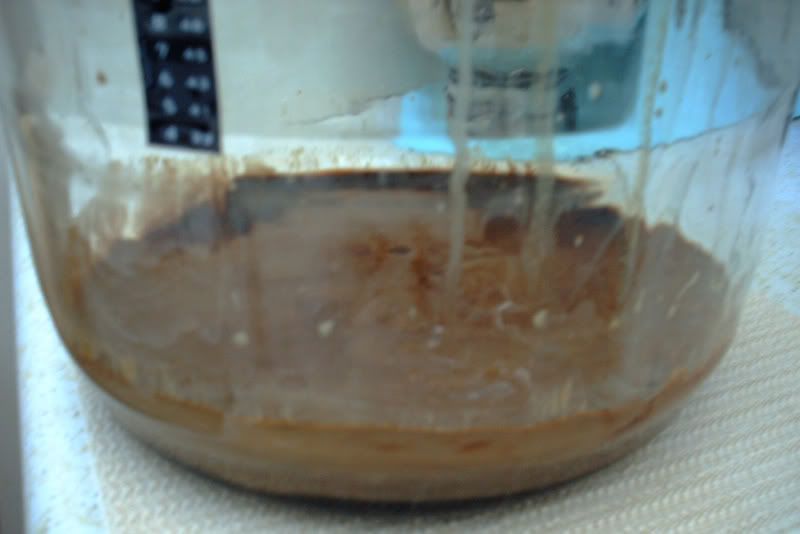
Big fat yeast cake. It's amazing how much the yeast of multiplied from those two little packets I pitched. It's also a little gross, especially when cleanup time comes.
I should mention that I know a guy who homebrews who brews three different batches on the same yeast cake. That means that after he kegs a batch he goes ahead and brews another one and pours the wort right into the fermenter that still has the yeast cake from the batch that he just kegged. I assume he does something to try to remove as much of the beer from the previous batch as he can and also carefully controls his wort addition/temp to keep from shocking the yeast.
It's an interesting method which might be worth trying, but there's no way I'm up to bottling and brewing on the same day. I guess you could maybe have a feeder wort that would keep the yeast alive for a day or two until you were ready to brew again. Hmmm... Anyway.

There's 4.5 gallons of home-grown, ready to be bottled, Imperial Stout. Woohee!
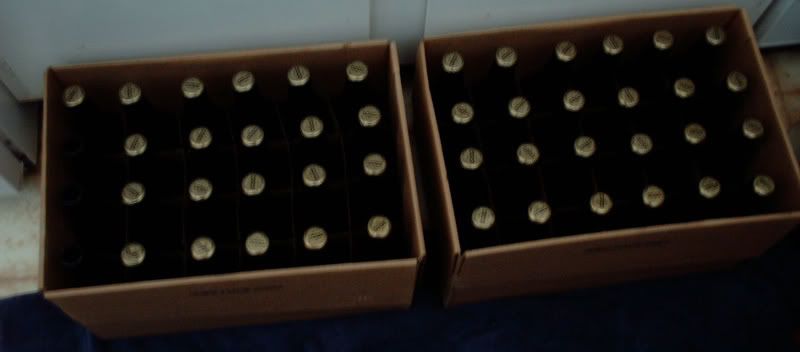
44 bottles filled, capped, and ready to age. (It looks like 45, but the loner on the top left is only about 1/3 full, so it doesn't count.)
Well, not much more to say about this batch. Expect another post in a couple weeks when I taste this beer and/or brew my Oatmeal Coffee Stout.










